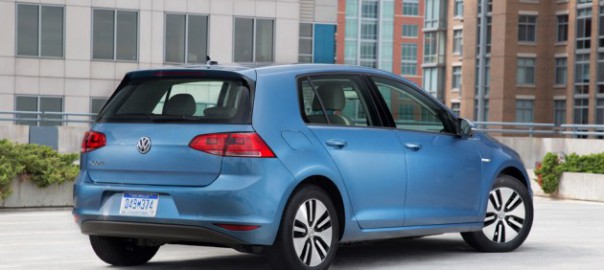The E-Golf doesn’t make much of a statement. In fact, part of its charm is that the “e” features are decidedly low key. Perhaps what’s true of wearable devices such as fitness trackers and smart glasses is also true of electric cars: They will fully arrive only when they stop announcing themselves to the world and just resemble “normal” products. From this perspective, the electric Golf might be downright futuristic.
The car looks like a regular Golf and has all the German engineering Volkswagen likes to brag about: tidy fit and finish, tight gaps between body panels, and more room than one would expect. It even drives like a regular Golf, particularly between zero and 30 miles per hour, when it’s peppy. Ticking up to 65 mph on Manhattan’s West Side Highway took a bit of prodding, but the car showed no problem zipping out in front of an pushy taxi cab at a light change.
Bells and whistles are scarce. The control panel doesn’t fill up with animated leaves and butterflies when the driver pilots with particular efficiency. The center-stack screen isn’t usurped by a flow chart of the car’s vitals.
The Volkswagen’s take on e-monitoring is Teutonic in its simplicity. A single gauge—the analog kind—with a needle tilts into a green area when the brakes are recharging the battery and ticks the other way when one steps on the accelerator. A tad to the right, the Golf displays a digital number showing how many more miles the car will go before it goes to sleep, just like an overworked iPhone (AAPL). And then there’s the speedometer: The Golf almost seems embarrassed that it doesn’t burn dead dinosaurs.
Read more: Business Week
